Slow Down, Take a Breath, and Shoot Your Photos on Film
Film photography allows you to have a user-friendly way to take high-quality photos.
November 3, 2021
Photographic technology has grown unfathomably since the first photo was captured in 1827. Now almost everyone has a camera in their pocket, easily accessible on their device.
As a result, photography has become extremely casual, with most folks having up to thousands of photos at their fingertips at a time thanks to smartphones. Cameras are getting smaller and better, seemingly by the minute.
We left the time-consuming process of developing film in the early 2000s, exchanging it for instantaneous photos on digital cameras and phones. No longer is there any worry of a photo being blurry or doubting if someone’s eyes were open.
Photography has sped up, but does it need to be faster?
There is joy in slowing down. Shooting photos on film is an activity worth your time. Film photography allows you to have a user-friendly way to take high-quality photos, and shooting on film provides a more personal experience for day-to-day life than a digital camera or a phone camera.
Film photography came across my radar when disposable cameras became more popular among people my age. I decided to try a disposable Kodak in March of this year and was hooked.
I ran into a problem with disposable cameras, though. They were spendy, going for $16.99 a piece at my local Fred Meyer. Even though I had so much fun taking photos with the disposable, it wasn’t worth it to me at that price.
Disposable cameras also generate a lot of waste. And while film photography inherently creates wasteful material during development and through packaging, there are ways around it, such as reusing and repurposing plastic film canisters and making sure that the chemicals used to develop film are being properly disposed of.
There are a few options for a more permanent film camera. There are reloadable plastic cameras, such as Lomography’s Simple Use Reusable Film Camera Color Negative 400, which is essentially a reusable, reloadable version of a disposable film camera.
The other option similar to a disposable camera is buying a point-and-shoot camera second-hand. Point and shoot cameras are compact film cameras made for easy use; the instructions are in the name: point, and shoot. The cameras generally have limited controls and offer autofocus and quick shutter speeds.
After extensive research, I purchased an Olympus Infinity Stylus Epic Zoom 80 on eBay for $95.
My camera from 1997 has flash, zoom, and even a self-timer. I carried it with me all summer. I took it camping, anytime I hung out with my friends, and took candids of my little sisters.
To me, the camera was worth the price. Now, I only pay less than seven dollars for each roll of film, as opposed to over $15 by using a disposable camera. I also am not generating as much waste as I would with a disposable, and my photos are of a much higher quality.
The first time I went to develop my photos, I took a few rolls to Walgreens. The process was long. It took over a month for me to get my prints back from the store, and it cost $14.99 per 24 exposures.
With the rolls I took to Walgreens, I was stingy with what I took pictures of since they were the first rolls that I shot with. Because of this, the photos I was seeing for the first time were from many months prior. I had absolutely no memory of taking a majority of the photos.
On the drive home, I found myself reaching over to my passenger seat to absorb the pictures at red lights, even though I told myself I would wait to open them until I got home.
The second I got back to my house, I spread out all of the prints on my kitchen table. It was amazing seeing the photos I had taken across three months. It felt like Christmas, but the gift was something I had worked for, to give to myself and my friends.
It was especially rewarding when I saw my friend’s reactions to the pictures. The next day at break, I put all my photos on a cafeteria table and gave my friends their favorite prints. I was so excited to see their reactions to the moments captured on film that happened months before.
These photos felt so special compared to those in my phone’s camera roll. The pictures felt more personal and deliberate, and because I only had one chance to take the photo, I had to make sure it was worth it.
Because the photos feel like a gift to yourself and others, the waiting period is one hundred percent worth it.
Now, I go to Photo Lab in Lake Oswego to get my photos developed. The roll from the beginning of the school year turned out amazing. Because of the vibrant sky, the shots from the purple-out football game are my favorite.
Senior Emma Olson has also taken up film photography and has been shooting on film since last February. She shoots on a Canon EOS 10S. Usually, Olson gets the digital files of her developed photos and edits them on her iPad using Lightroom or Photoshop “so that I could really create the art piece,” she said.
The thing that draws Olson to film is the details. “When I edit my pictures, I tend to focus on soft and warm finishes, so I feel like film gives me a really good starting point for that, just with the quality of photos that you get,” she said. “And the detail, I feel like it’s really captured excellently through film compared to digital.”
Since starting, Olson has become “biased” towards film. “Whenever I am taking a picture of something I’m like, ‘Oh I wish I could have been doing this on film’ because… I just love it,” she said.
Olson’s favorite thing about film is “the wait time, which seems kind of silly,” she said. In the time period between taking the photos and getting them back, Olson will often forget the pictures that she took. “…it’s like this little surprise,” she said. “[It’s] like a big present that has a bunch of little presents inside of it.”
Olson looks forward to seeing what really happened when the photo was taken. “I think that is a really rewarding part of it because you aren’t getting that instant gratification that you would with digital,” she said.
Her advice for getting into film photography is to do your research. Olson encourages anyone interested in purchasing a film camera to buy second-hand.
Cameron Rast is a senior at La Salle who has been taking photos on film since the summer of 2020, taking after his older brother. He shoots on three different cameras, the Canon Sure Shot 85, Pentax K1000, and a Nikon F100.
Rast’s advice for anyone interested in film photography is “Just go for it. It’s really fun and you can get pretty cool cameras that are really easy to use for pretty cheap,” he said. “It’s worth it if you want the photos and are interested in it.”
Rast’s favorite thing to capture on film is his friends. “I love to take photos of my friends and people in general,” he said. “Kind of out of the blue when no one is expecting it.”
Rast believes that capturing a moment is the best part of film photography. “I love the idea of capturing a moment,” he said. “Once you take a photo, that’s all you’re going to do, you’re not going to take a bunch of photos and keep checking it.”
While the wait time for developing photos is extensive, Rast doesn’t mind, and he said getting photos back is one of his favorite feelings. “It’s pure joy,” he said. “I get to send them to everybody I know that are in the photos and they’re just super fun to look at.”
Film isn’t something that needs to be left in the past. In a way, taking a photo today has lost some of its meaning. The instant gratification of digital cameras makes photos seem and feel less important. Capturing the moments in your life should be a powerful thing.
Film photography is an easy way to get this power back.

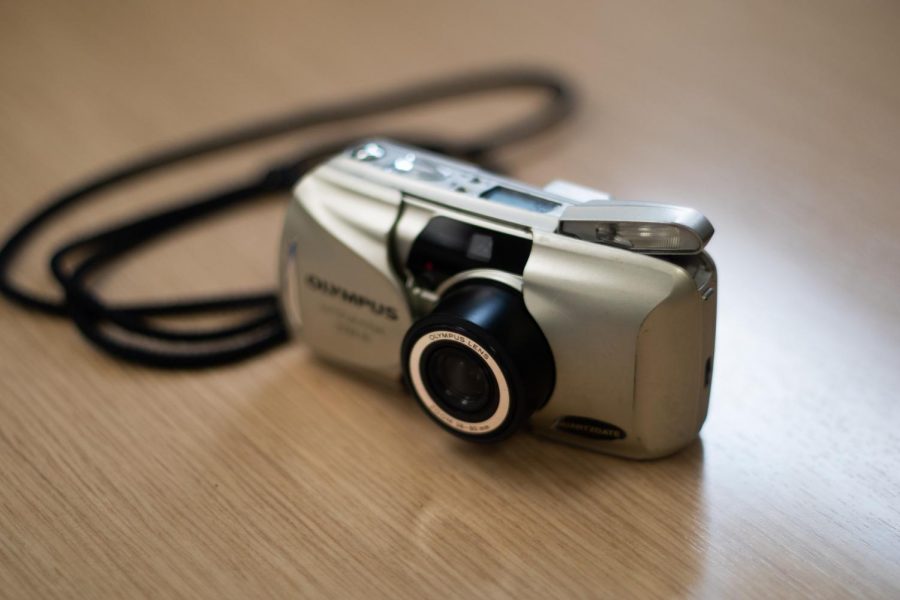









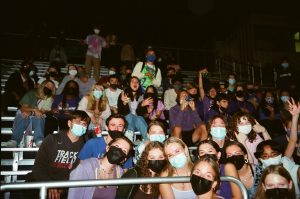


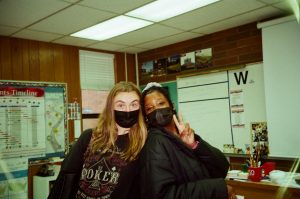
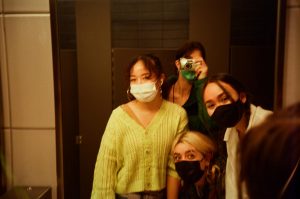
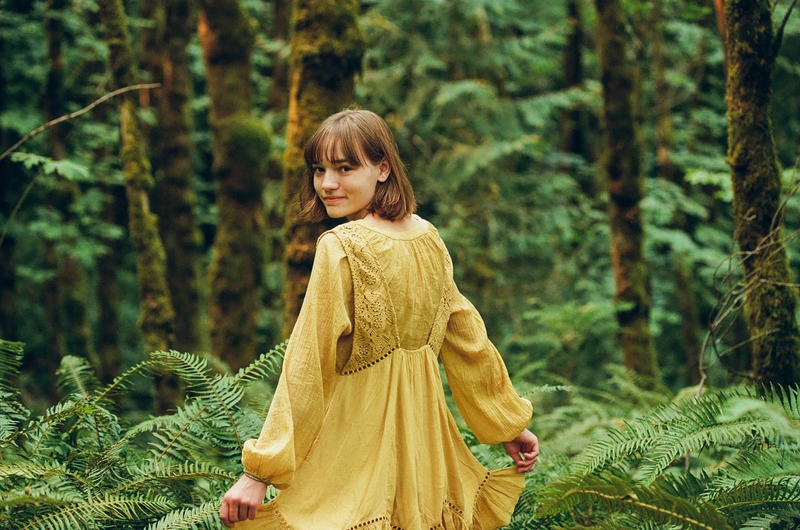
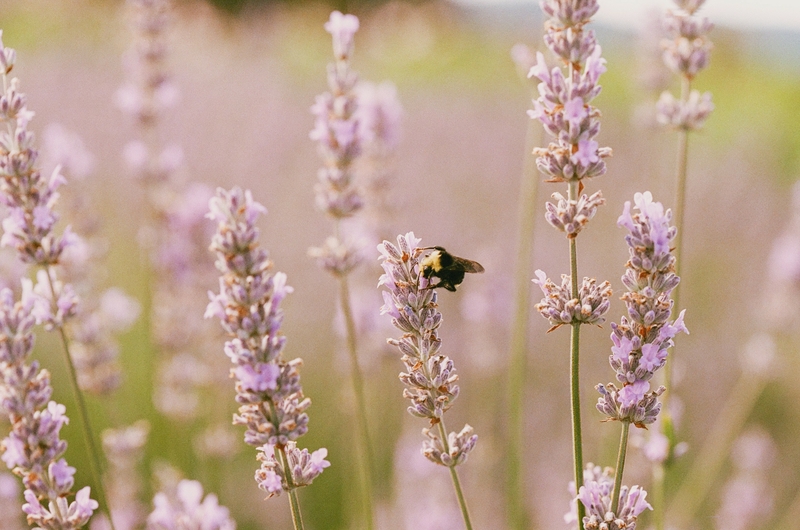

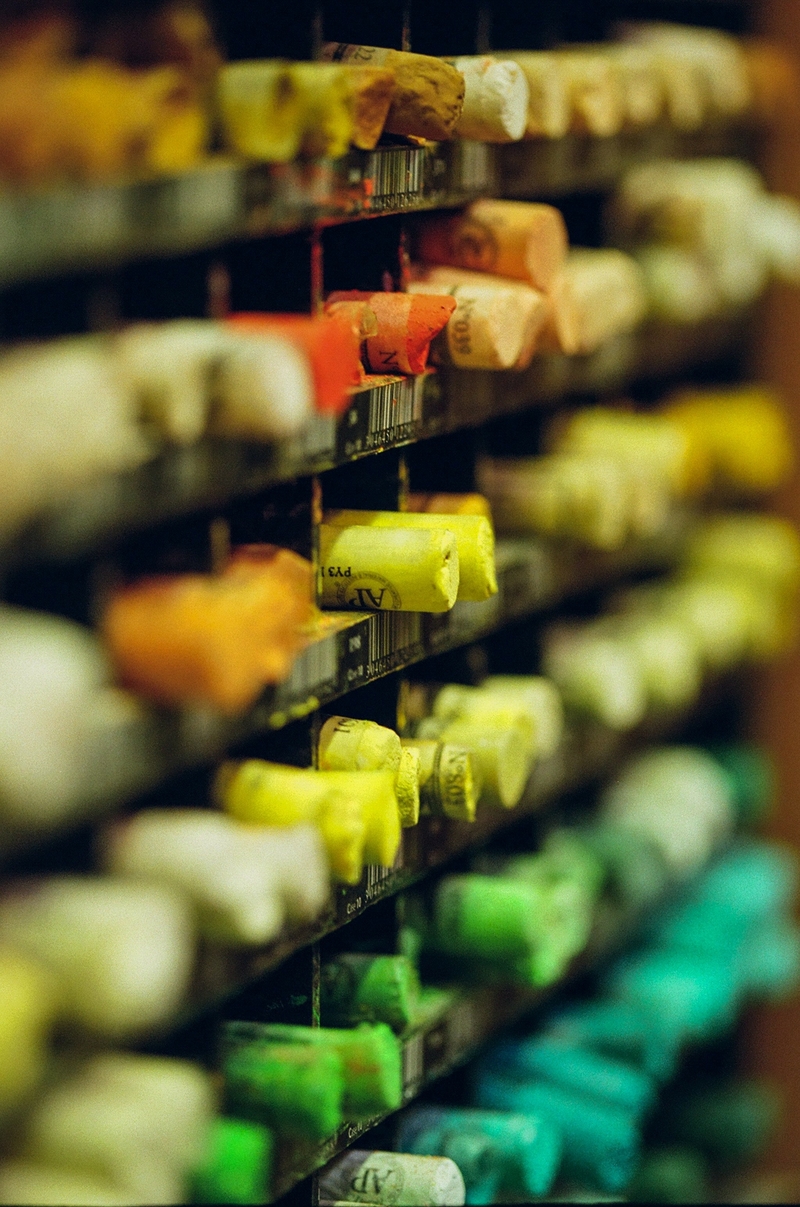
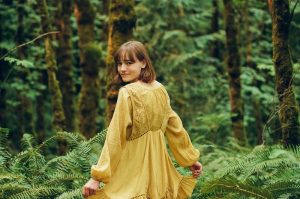


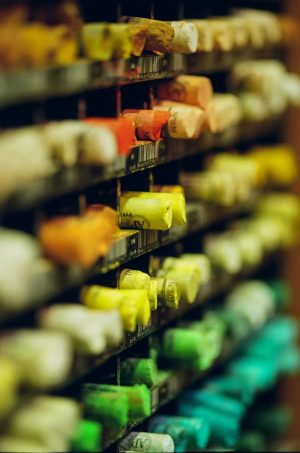













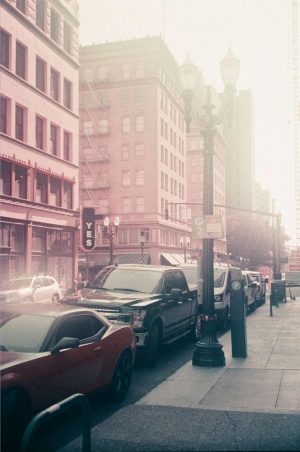




Tom McLaughlin • Nov 8, 2021 at 2:14 pm
Well-written and intriguing essay. If I weren’t already involved in other fun activities, I’d take up photography again.
I really enjoyed reading about your art, Emma’s and Cam’s warmed my heart. I love knowing that people I know and respect are making art.
Also, long ago, I took a black and white photography course in which I rolled my own film cannisters, then developed that film and printed shots in a dark room. Our daughter also shoots film, and she told me just this morning about how much she loves the surprise of seeing the prints long after she’s shot them. It’s like that Christmas morning.
And, I love this, Elsie: “There is joy in slowing down.”
TRUTH!!!!!